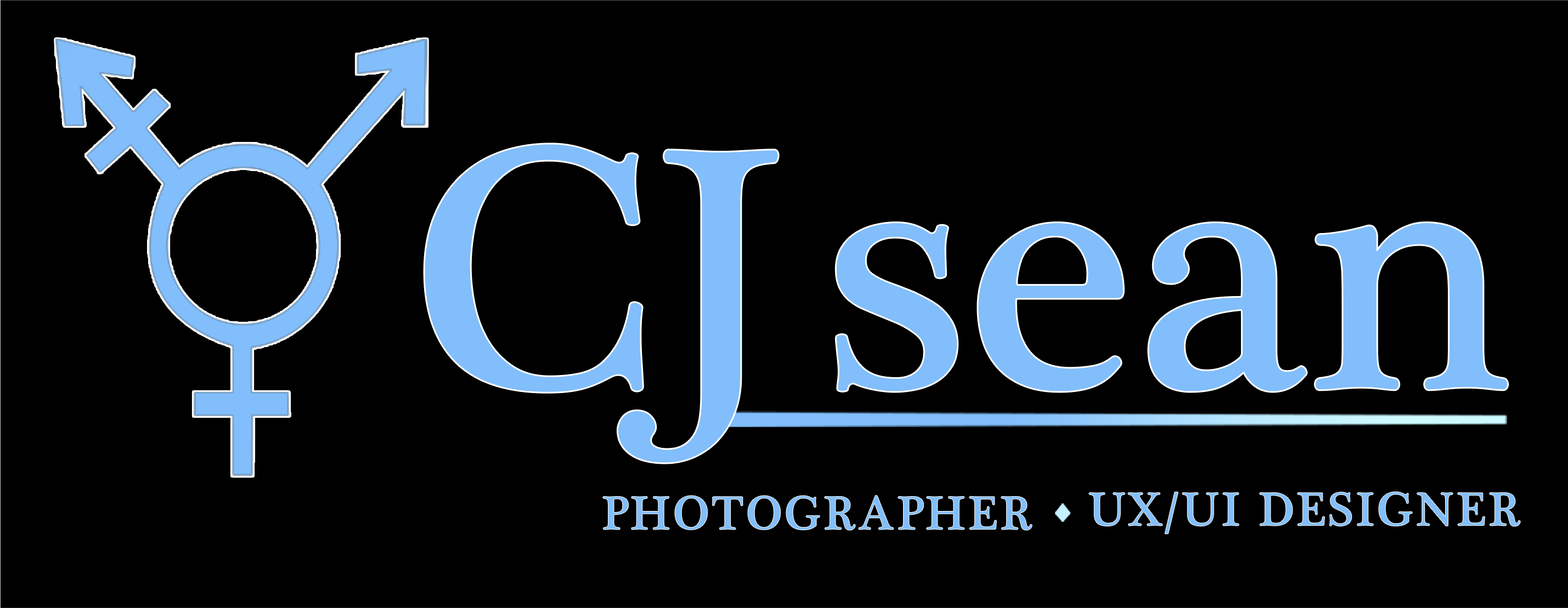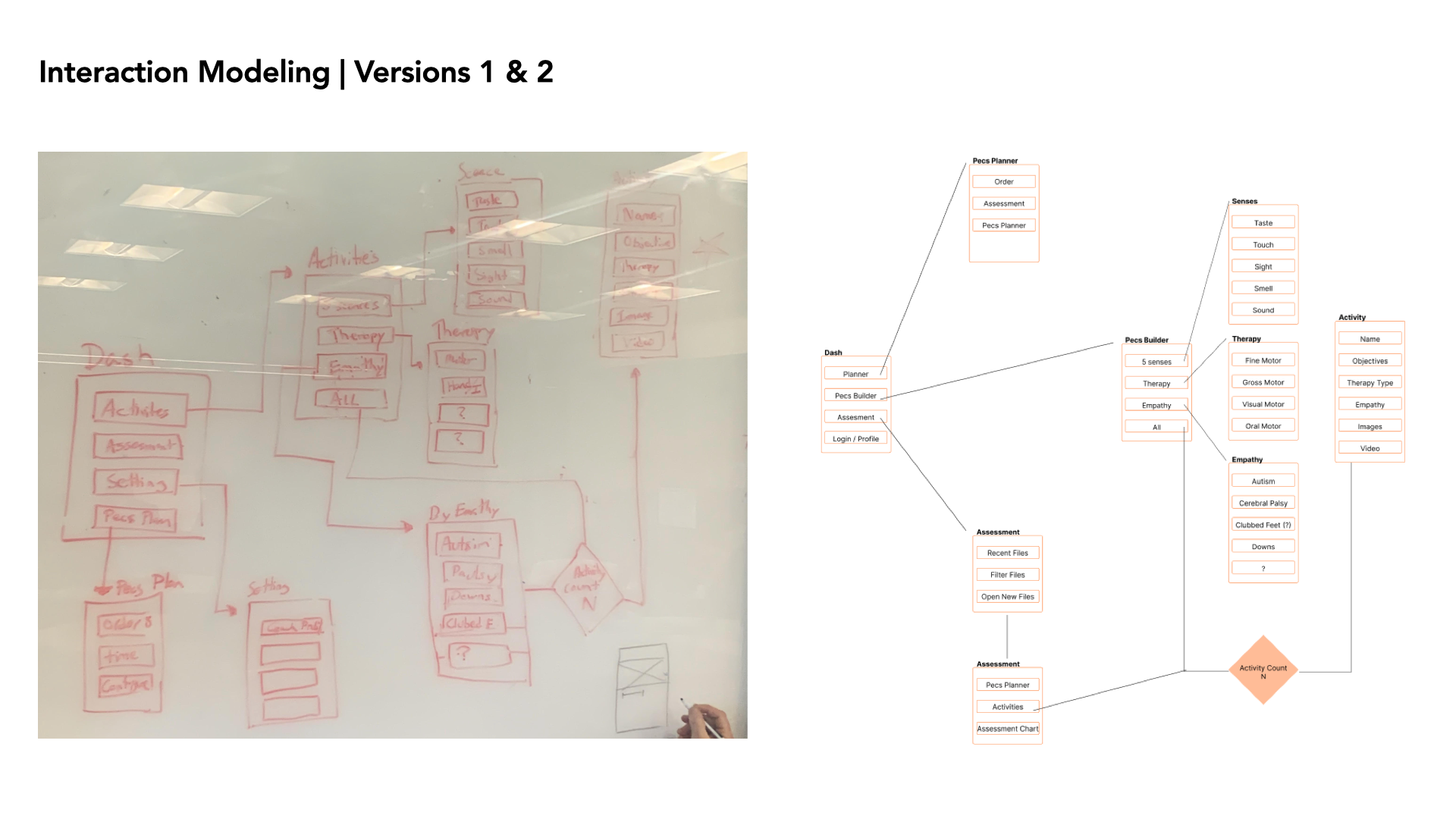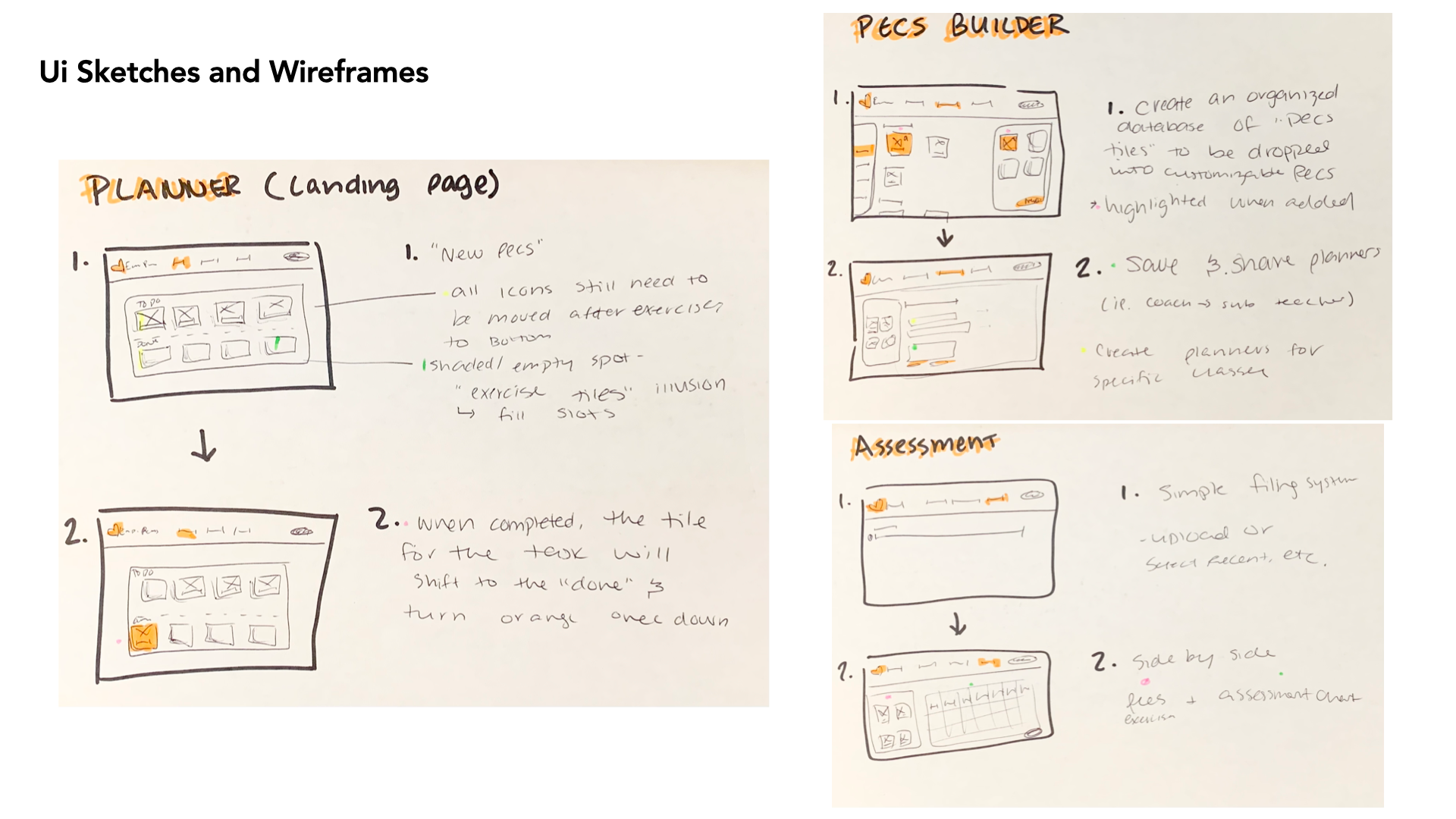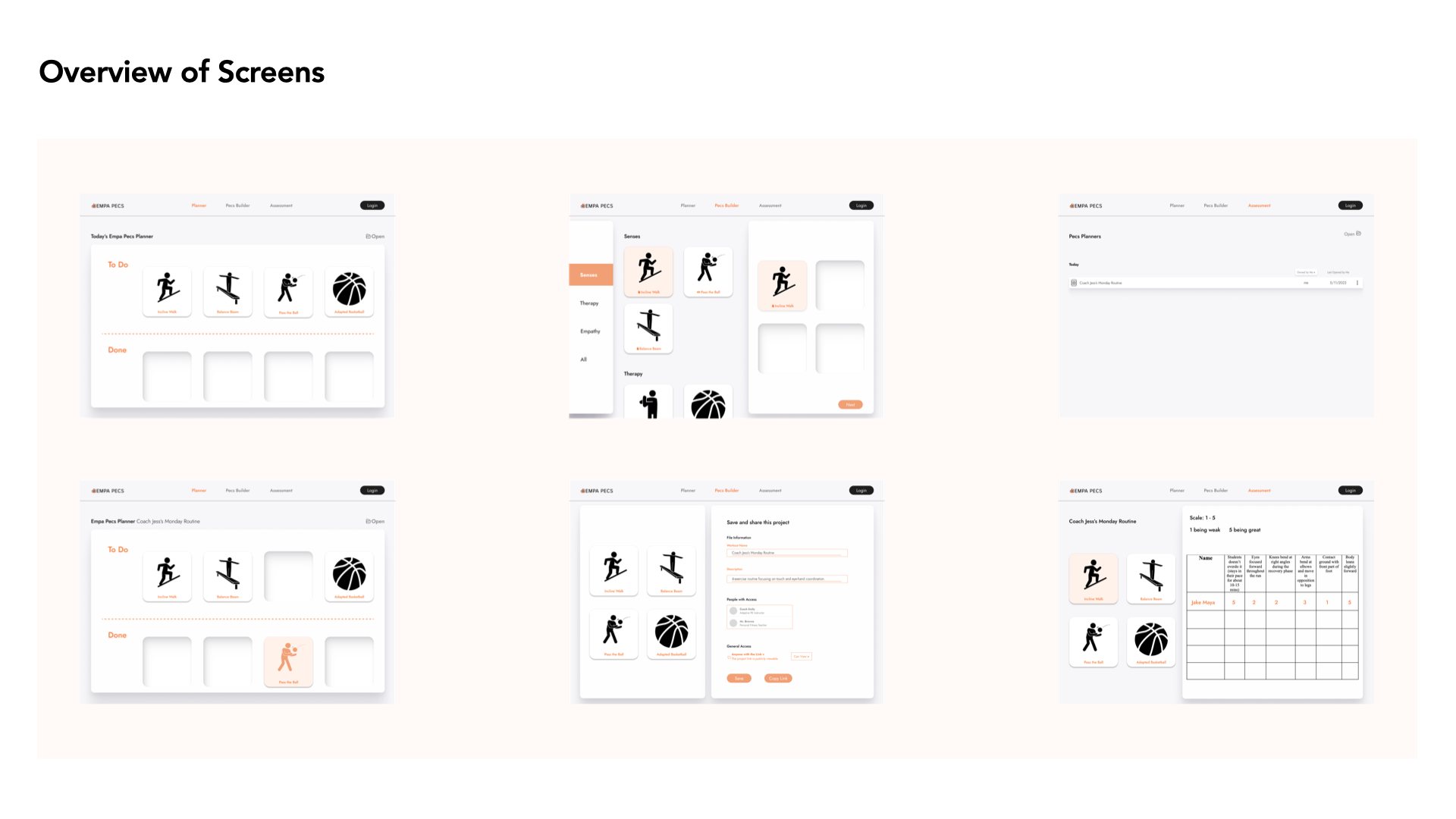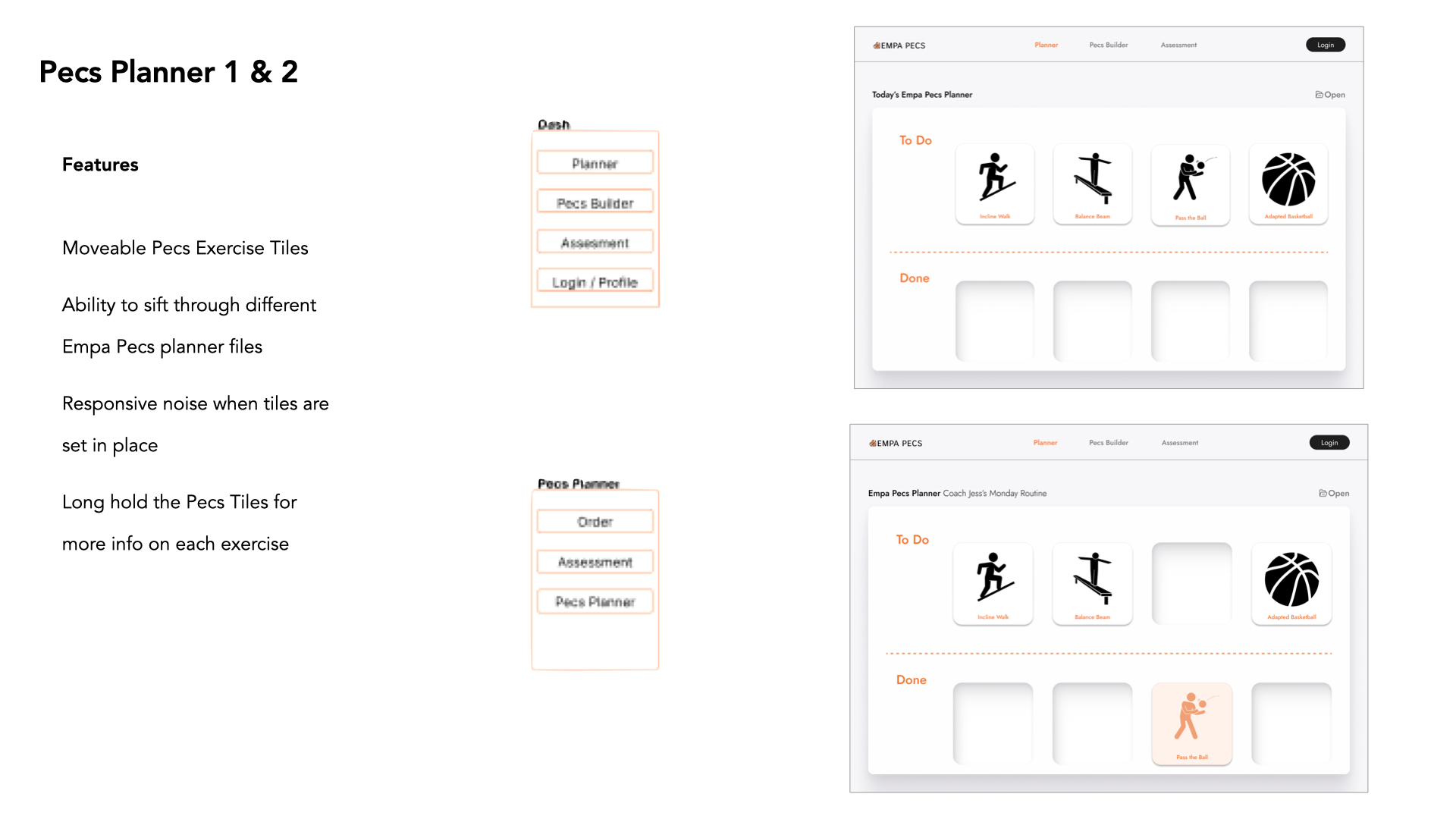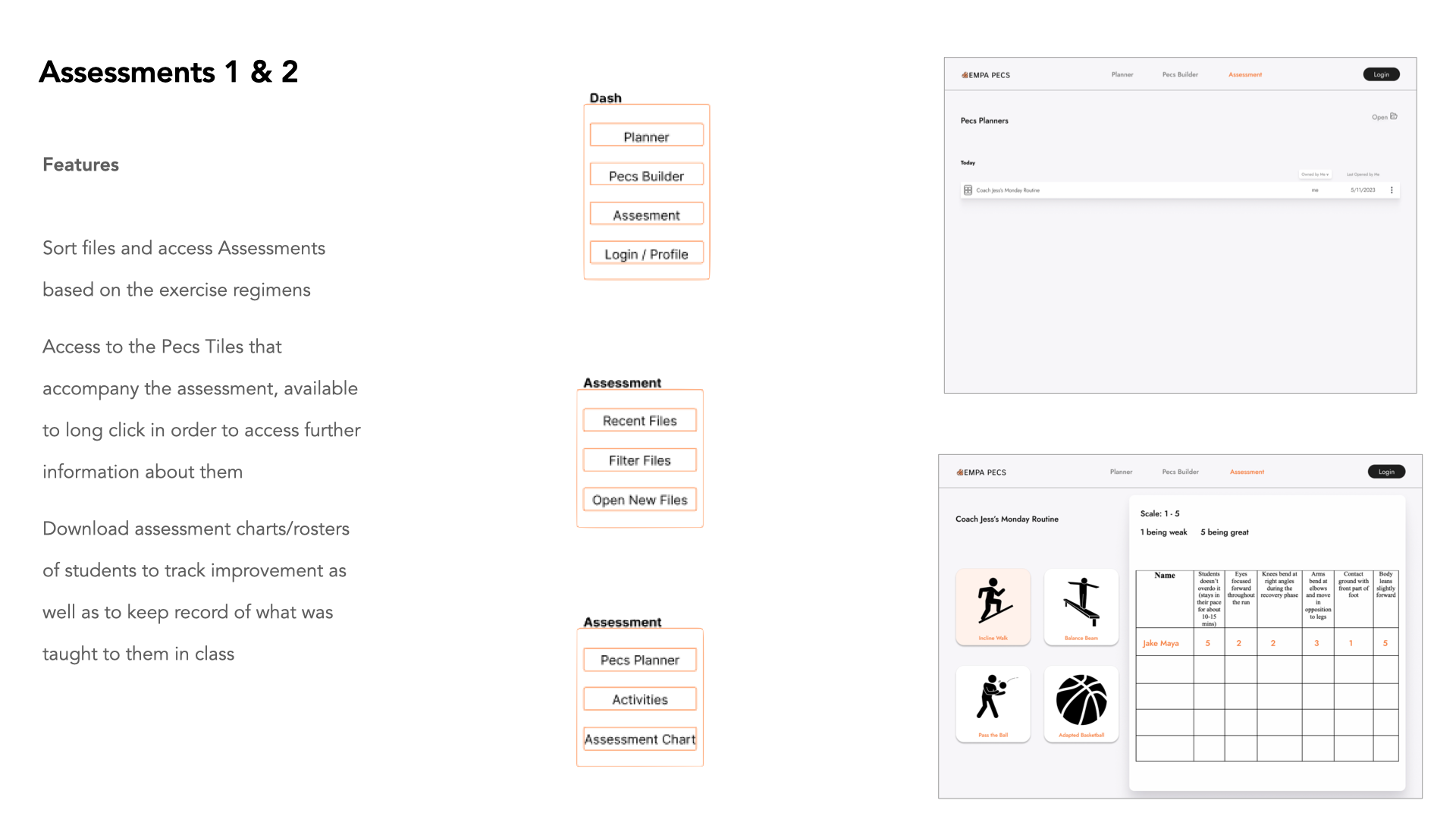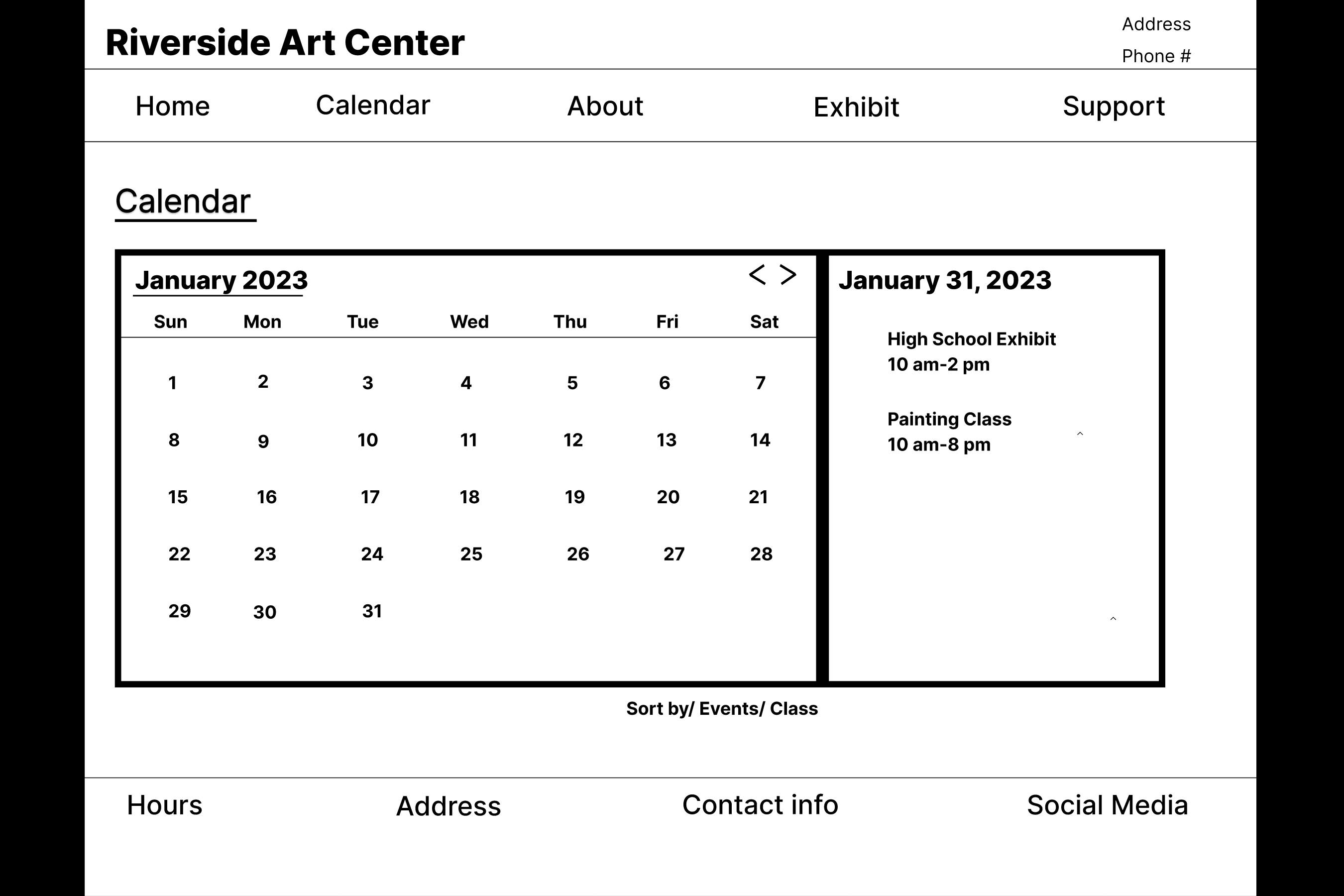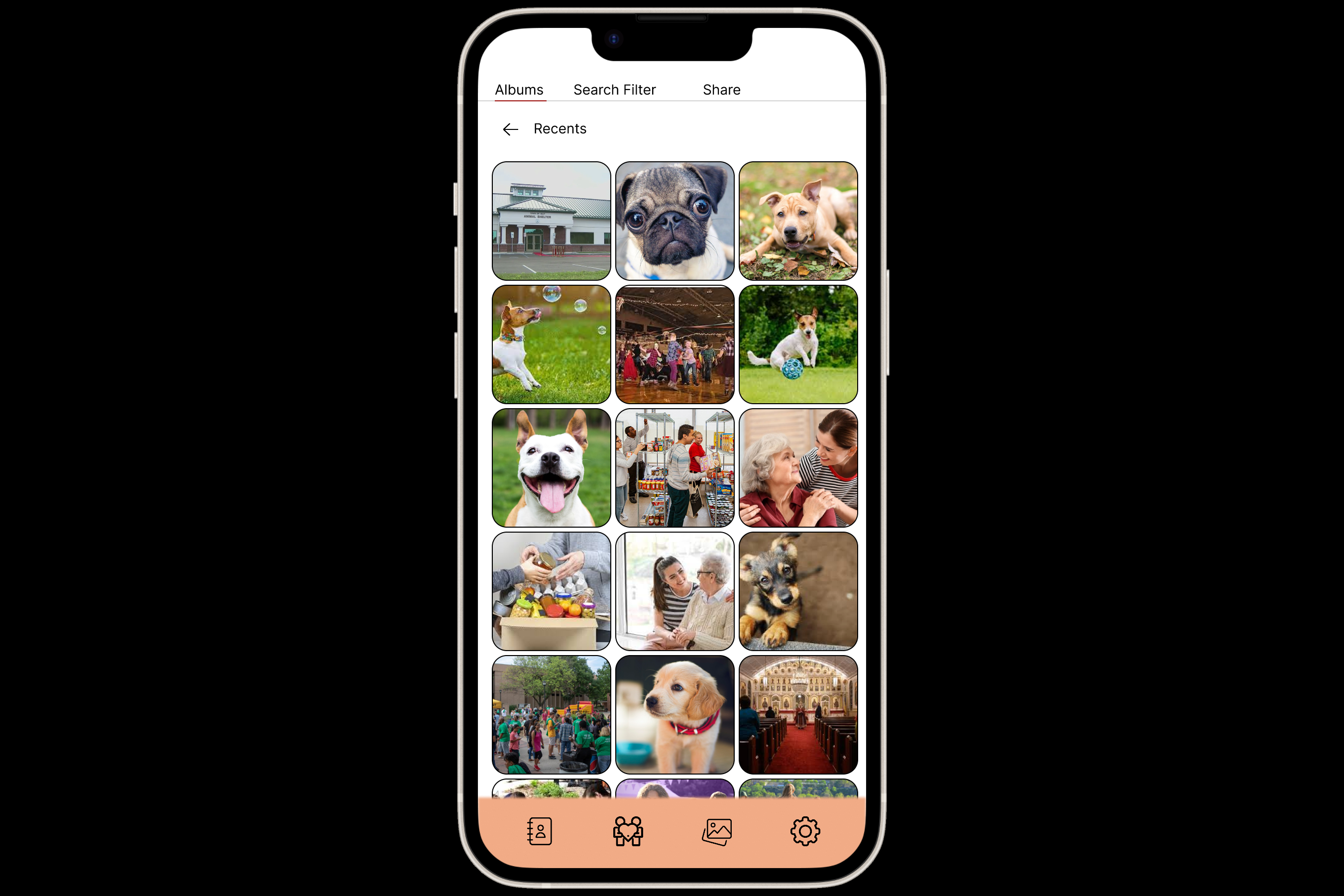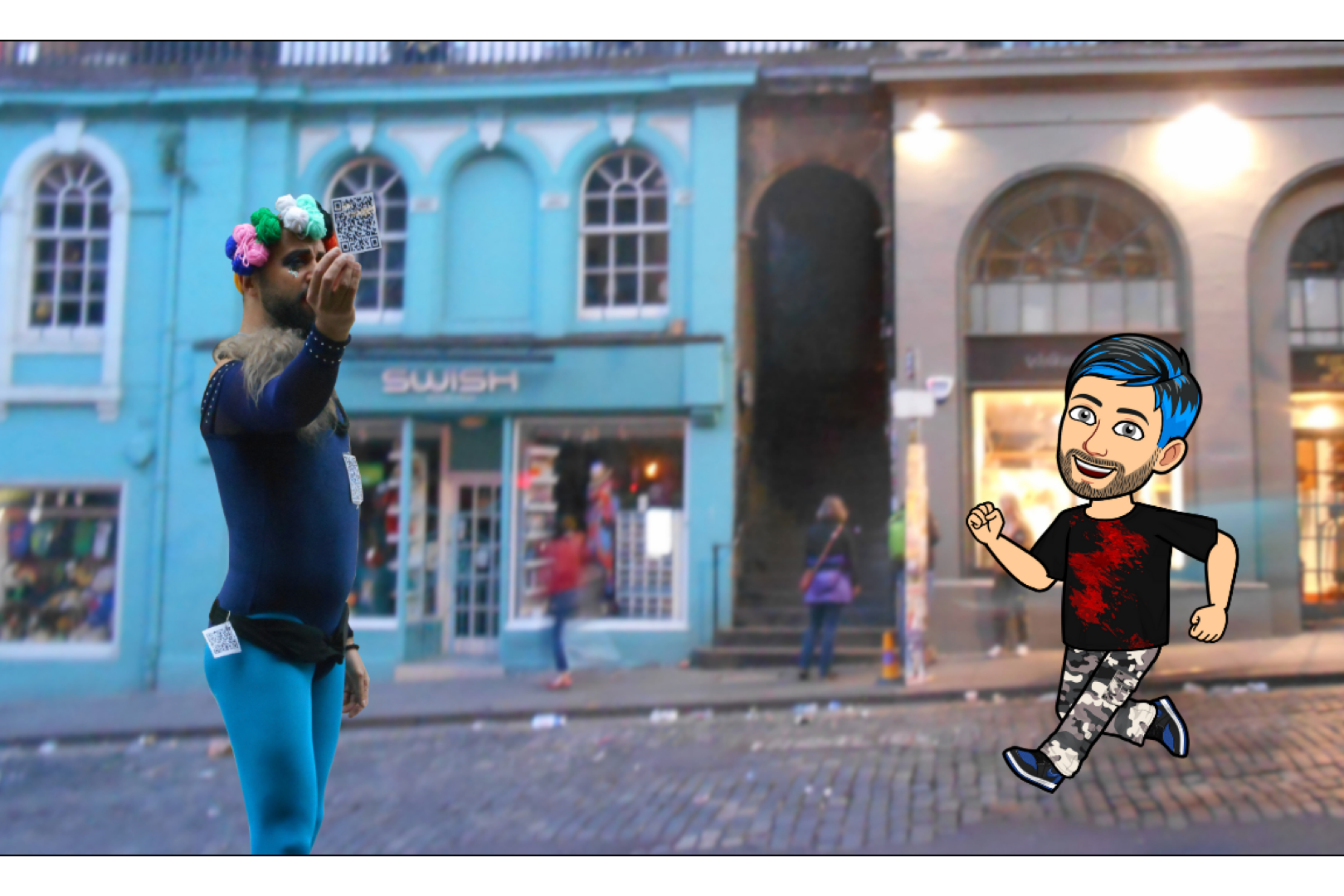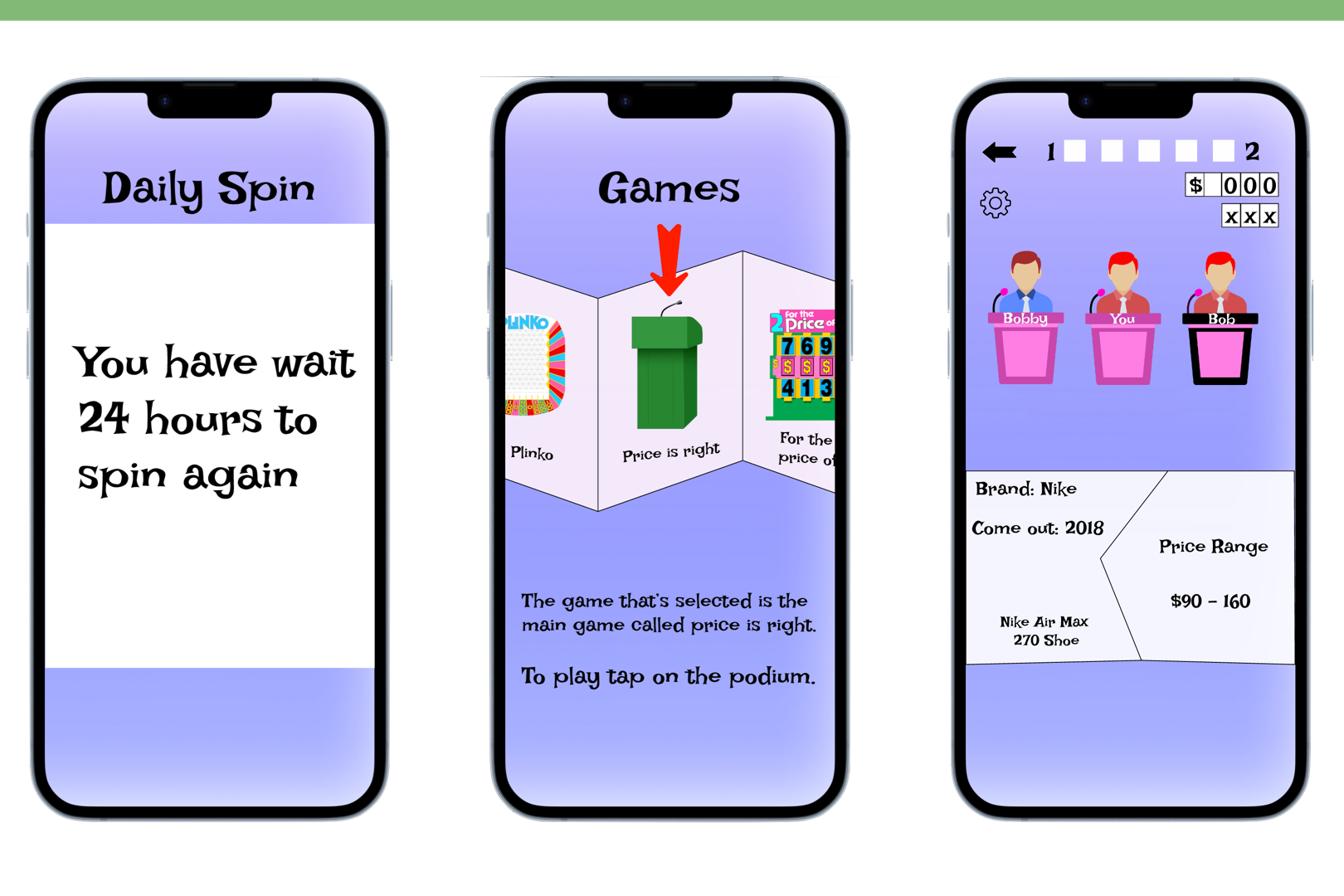Duration: January 2023- May 2023 (4 months)
Role: UX/UI Designer & Researcher
Team: CJ Ehrlich & Anna Edwards
Tools: Figma, paper prototype, & Keynote
User Research: Observations, Task Analysis
Agile UX Process: Interaction Modeling, Wireframing, and Mid Fidelity Prototypes
Client: ISF (inclusive sports and fitness) in Holbrook
Objectives:
Achieve empathy and community through education and physical activity in the elementary school setting.
Problem:
Neurotypical Elementary school students are unfamiliar with the challenges of their neurodivergent peers.
Solution Value Prop:
An empathy based pecs planning and assessment web app that educates neurotypical elementary school student about their neurodivergent peers unlike typical gym classes.
Stakeholders:
1. Neurodivergent Students: ND Students have specific needs and goals that may not be evident to their NT peers. At ISF, students have routines that pay attention to heart rate monitors and water breaks, unlike the neurotypical students experience at an elementary school.
2. Neurotypical Students- NT elementary students, ranging from 3rd to 5th grade, are more aware of themselves and are beginning to understand each other more. Kids are full of empathy towards people; so these ages are especially good candidates to receive specialized exercises through Empa Pecs in order to empathize for their neurodivergent peers.
3. Physical Education Staff: PE staff are already interacting with both NT & ND students. They have a good understanding of the individualized attention that goes towards specific behaviors in a ND class, and can help to communicate these traits and their challenges to neurotypical students.
Observation Study
The Tech Room
VR technology: Their old VR headsets were used as rewards, as well as on the treadmill with the hardness. Currently, there are new VR headsets with accompanying software getting developed to allow the gymnast to go room to room and explore using the headset.
Different games like a drumming game are used to mimic certain exercises (drumming motions = arm circles). Current games are getting created to help gymnasts with squats, dodging and punching motions.
Vibeplate & Metronome Game: Used to add extra stimuli to a gymnast's work out, rather then eliminating all "extra" stimuli from their environment (like other gyms may).
The Vibeplate is a mat that gymnasts stand on and send low frequency vibrations. The metronome game is a piece of equipment that measures timing and anticipation response
time. Users know the back and forth motion
is repetitive, and so timing when the basketball
will return to them measures their anticipation reaction time. Aside from using a basketball on top of the metronome, the glowing lights are
also used on top.
time. Users know the back and forth motion
is repetitive, and so timing when the basketball
will return to them measures their anticipation reaction time. Aside from using a basketball on top of the metronome, the glowing lights are
also used on top.
Cycling room
The cycling room consisted of 3 different types of bikes, as well as the heart rate monitors.
Heart Rate Monitors- These are given to each gymnast when they walk in. The bracelets are all numbered accordingly, and show the gymnast's heart rate on the screen. The heart monitors also glow depending on how its reading the gymnast's heart rates: blue is resting, yellow/orange is optimal, and red is peak performance. The trainers aim to get the students in the yellow/orange for 30 minutes, and the red for about 5.
Bikes- The front yellow & grey bikes are synced up to a tv running a bicycle video game, and as users pedal, their avatar is added in. When the gymnasts stop, their character stops, and doesn't continue until they do again. The two black bikes in the back are connected to an XBox with controllers. If users want to play, they need to be petaling in order for their controllers to connect. The game pauses whenever they stop petaling, and will not continue until they do.
Circuit or Green Room
In the Green Room, all the gymnasts and trainers do 10 minutes of group warmups before breaking off to do their activities.
Most activities in this room use basic workout equipment: obstacle courses, monkey bars, stations using cones, trampolines, swings, and soccer nets. However, the vibeplate and another piece of equipment called the Reaxing Machine are located here as well.
Reaxing Machine: The Reaxing machine used buttons that lit up & needed to be tapped in order to measure reflex time with the gymnasts.
Grey Room
The Grey Room had more technology such as the rock wall treadmill, the Tuff Tread, other standard treadmills, a large treadmill for 2-3 people with harnesses, and training bicycles.
Tuff Tread: The Tuff Treads are 2 different treadmills with harnesses, and one with a
screen. The goal is to have trigger points on the gymnast's body that sync to the game. The 2 person treadmill also has harnesses, and includes a large projector screen where different shows are played to increase engagement on the equipment.
screen. The goal is to have trigger points on the gymnast's body that sync to the game. The 2 person treadmill also has harnesses, and includes a large projector screen where different shows are played to increase engagement on the equipment.
Training Bikes: There are training bikes on the walls that they use during 1 week training program. The idea is to teach the gymnasts how to ride a bike without the use of training wheels. If a gymnast is taught how to ride a bike using training wheels, they don't learn how to incorporate balance into the motor skills needed to ride a standard bike.
Rock wall Treadmill: The Rock wall treadmill is
used for student to improve their climbing skills, and rotates based on speed and weight of the gymnast, with the components being
customizable for each gymnast.
used for student to improve their climbing skills, and rotates based on speed and weight of the gymnast, with the components being
customizable for each gymnast.
Gaming Rowers: Rowers were also hooked up to games to keep the gymnasts engaged during
the workout, and they got paused when
exercising stopped.
the workout, and they got paused when
exercising stopped.
Anna's Gymnasts
Gymnasts during this session worked one on one with the trainers. They walked into the building, and went for the cardio room to get their heart rate monitors. Not all gymnasts wanted to do the group exercises, and the trainers modified them or did the warmups separately if necessary. Gymnasts were engaged by their interests: tangible wiggles figures, the shows Peppa Pig and Coco Melon to name a few. None of the gymnasts my trainers had were interested in the video games on the equipment
Puzzles were used on the vibemat for
OT exercise.
OT exercise.
Anna's Specific Gymnasts
Minors names are confidential
S: S's trainer, Kevin, hid the Wiggles characters around the gym before he came in. The goal was to use them as a non-permanent reward system; S knows he has to give the prizes back at the end of each session, and that the transaction isn't permanent. However, it is still enough to keep him motivated. I only observed Sully on the treadmill, using the trainer's phone to watch the wiggles' music videos using a specific set of rules as motivation: at 1.3mph it's quiet, at 3mph the music gets turned on, and at 4mph the music gets to be loud so he can jam out.
L (10): I then got to observe L and Latisha using the obstacle course and monkey bars. L was very motivated for the duration of working out, and enjoyed using her chart. She wasn't afraid to ask for help ("both hands" to hold during activities), and was positively reassured and encouraged to push herself with her workouts.
A (9), Nonverbal: A was motivated by her favorite exercise: the monkey bars. While on the treadmill with the harness, she tended to just "drop" herself. The harness prevented her from falling, but the machine had to be automatically stopped in order to reestablish what she needed to do.
N (6), Nonverbal: N came in an did warmups individually with Latisha before moving to the treadmill with the harness. He did not know how to jog on the treadmill, so Latisha was adapting the speed to try to figure out how to have the gymnast keep a steady jogging pace instead of walking, running, or doing a hopping motion. N used a speaking device to announce the colors of the puzzle pieces he was using on the Vibe Mat.
CJ's Observation Notes
Minors names are confidential
Every kid gets a heart rate motion- The heart rate motions are different colors . The increase heart rate the motion will turn red and the decrease of the motion turns blue. The watches is for medical reasons and keeps tracks of activity levels.
Golf course/obstacle course- It's an obstacle course that the kids had to get the golf balls to the golf balls at the other end. It has mats, disc, balance balls, and a balance beam.
When the trainer and Athlete 1were in the golf course area they played catch where trying to balance on the the balance balls.
Basketball-
The trainer asked Athlete 2 if he wanted Basketball on the schedule- he said “no”
The trainer did let know me that Athlete used to like Basketball but then he stop like Basketball wasn’t sure why he didn’t like it anymore
The trainer asked Athlete 2 if he wanted Basketball on the schedule- he said “no”
The trainer did let know me that Athlete used to like Basketball but then he stop like Basketball wasn’t sure why he didn’t like it anymore
Catch with a different Athlete -
Athlete two moved the cheese box that was from the mini golf area & then put the donut pad that was near the monkeys bars.
Brian moved the Hula Hop closer to Athlete 2 to play catch while Athlete 2 was sitting in the donut pad. Brian got the medication ball to play catch with. After while Brian switch to a lighter ball after multiple times getting hit by the Hula Hop when Athlete 2 thrown the medication ball (or weight ball) though at the hula hop stand .
Interviews
Overview of Themes-
During the research process, we conducted interviews with both an occupational therapist and an adaptive physical education coach. Some of the reoccurring themes include:
1) Utilizing the 5 senses when explaining
neurodiverse challenges to neurotypical students.
neurodiverse challenges to neurotypical students.
2) Implementing breaks between exercises.
3) Providing gym instructors in elementary schools
with information pertaining to neurodivergent
students- explaining how the exercises relate to
different special needs.
with information pertaining to neurodivergent
students- explaining how the exercises relate to
different special needs.
4) Empathy over Apathy
5) Students 3rd-5th grade have enough understanding about themselves, and can now understand their peers better.
6) Behaviors and triggers can be used to amplify an athlete's ability. By adding extra stimuli, athletes learn how to overcome obstacles and distractions better. (whether its getting used to performing in a stadium,
or getting used to the vibe mat at ISF)
or getting used to the vibe mat at ISF)
We interview:
Amanda Occupational Therapist
Spoke to Anna & CJ on 4/14/2023
Discussed behaviors, stimuli, gaming app with rewards system, etc.
Google Doc Notes: https://docs.google.com/document/d/1OUcsSenpi_sIdVl6ZU_QlzAnqEFGgcvjcKkzVgkq21I/edit?usp=sharing
Spoke to Anna & CJ on 4/14/2023
Discussed behaviors, stimuli, gaming app with rewards system, etc.
Google Doc Notes: https://docs.google.com/document/d/1OUcsSenpi_sIdVl6ZU_QlzAnqEFGgcvjcKkzVgkq21I/edit?usp=sharing
Cheryl Adaptive PE Coach
Spoke to Anna on 4/29/2023
Discussed potential designs for exercises, empathy in not students, elementary schools, and other outreach programs
Google Doc Notes: https://docs.google.com/document/d/12GOZfQ8RpG5BExdfFZt9He2tFXpmIaI9vlBbcPKLJ-I/edit?usp=sharing
Discussed potential designs for exercises, empathy in not students, elementary schools, and other outreach programs
Google Doc Notes: https://docs.google.com/document/d/12GOZfQ8RpG5BExdfFZt9He2tFXpmIaI9vlBbcPKLJ-I/edit?usp=sharing
Proposing a Solution
Through our research from our on-site observations, we were able to better understand the behaviors of elementary school students with special needs. We also found out that Sayville Elementary school wants to get involved, so our goal shifted to discussing outreach programs for ISF gym to provide education materials to neurotypical elementary students about the challenges associated with special needs.
To do so, we furthered our data collection and understanding about occupational therapy, exercise design, exercise curation, assessment design, pecs planners and more. Using these categories, we designed a web app to deliver curated exercises to neurotypical students using a Pecs Planner format. Furthermore, educators will be able to apply specific assessments to each student as well. By delivering information about special needs to neurotypical students, coaches will educate neurotypical elementary students in order for them to be more empathetic towards their ND peers.
Our goal is Empathy, not Apathy.
We're going to be educating neurotypical students so that they become aware of the daily challenges of others, not to feel sorry for their peers.
Exercise Research and Design
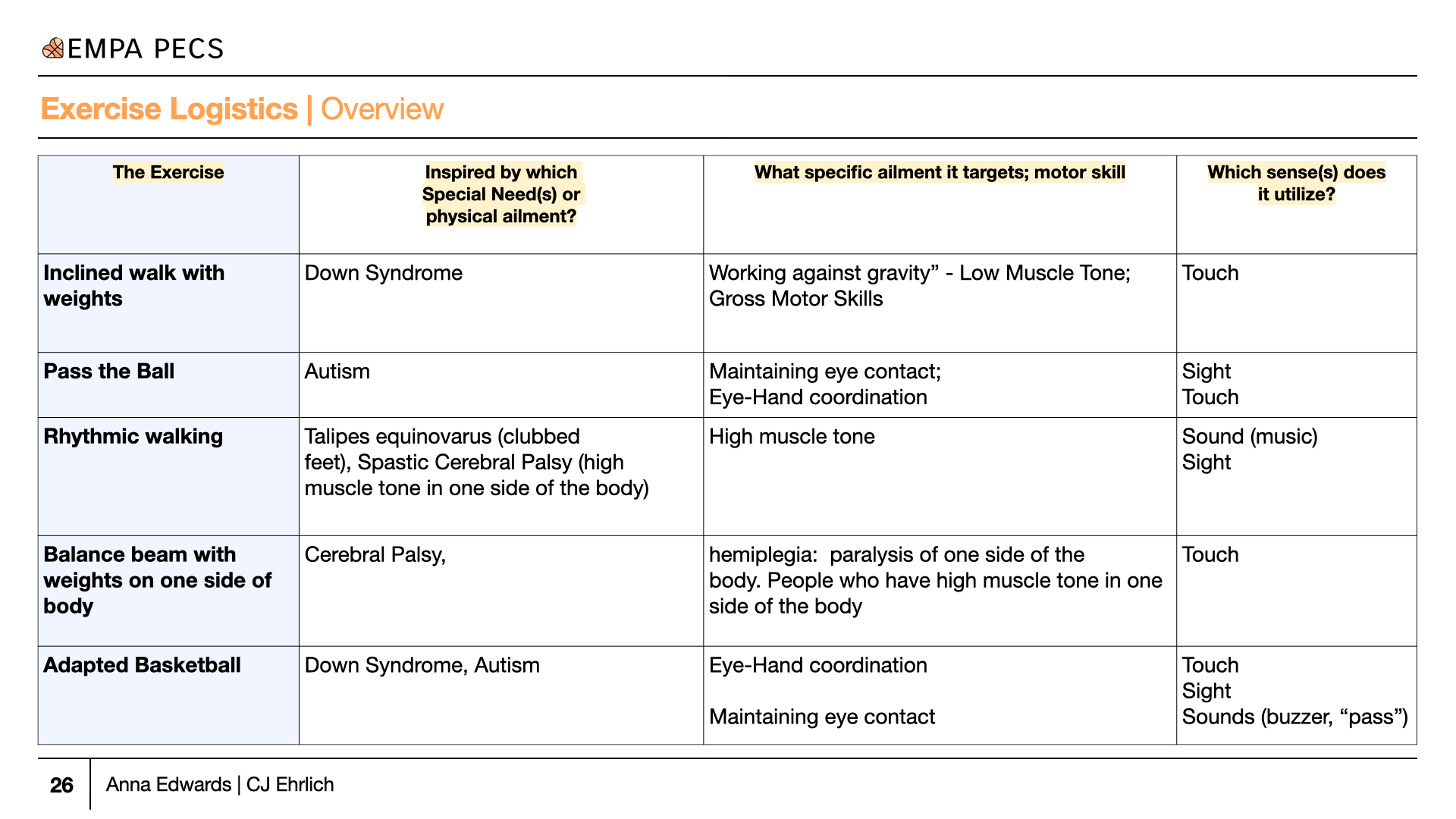
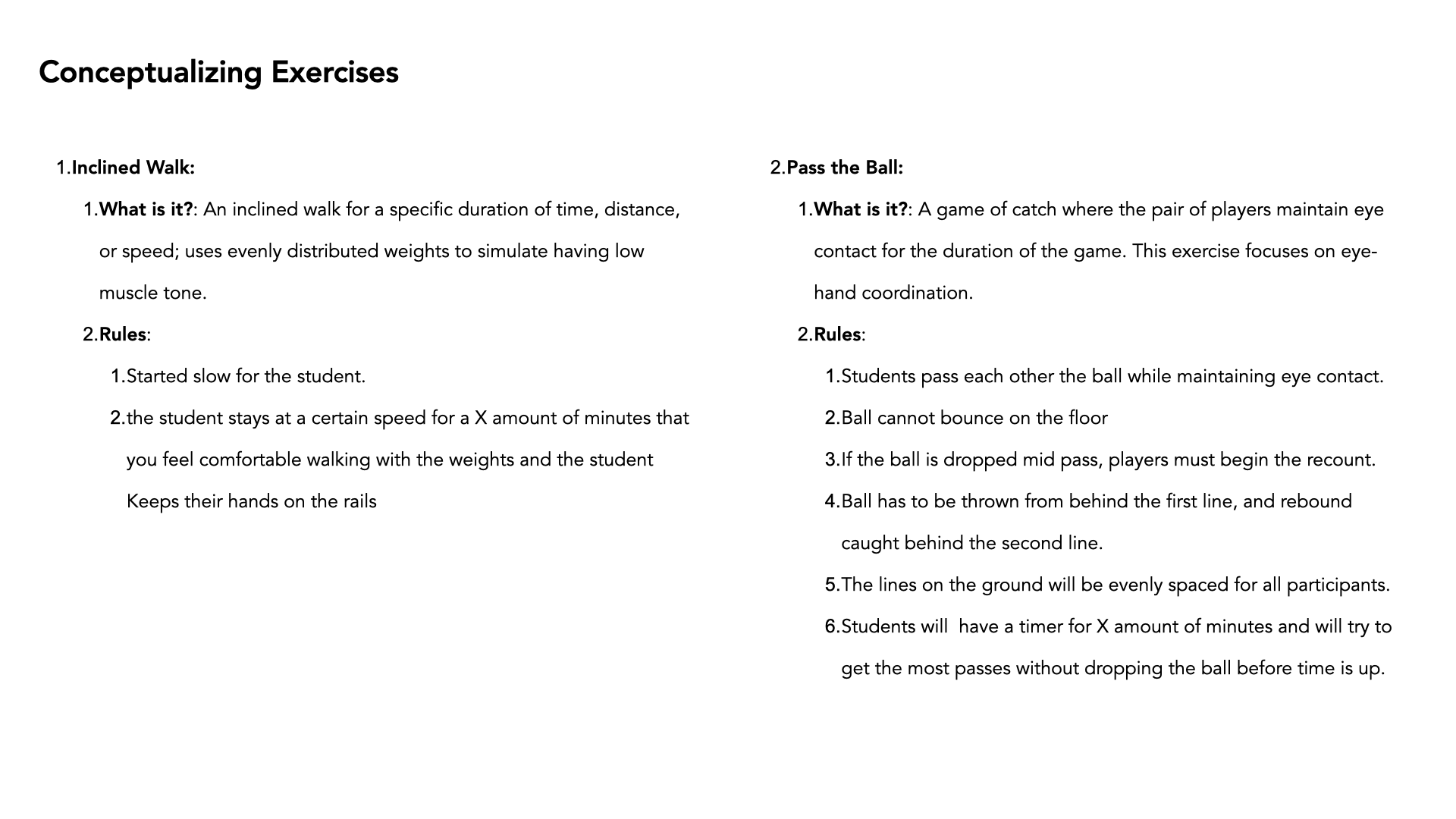
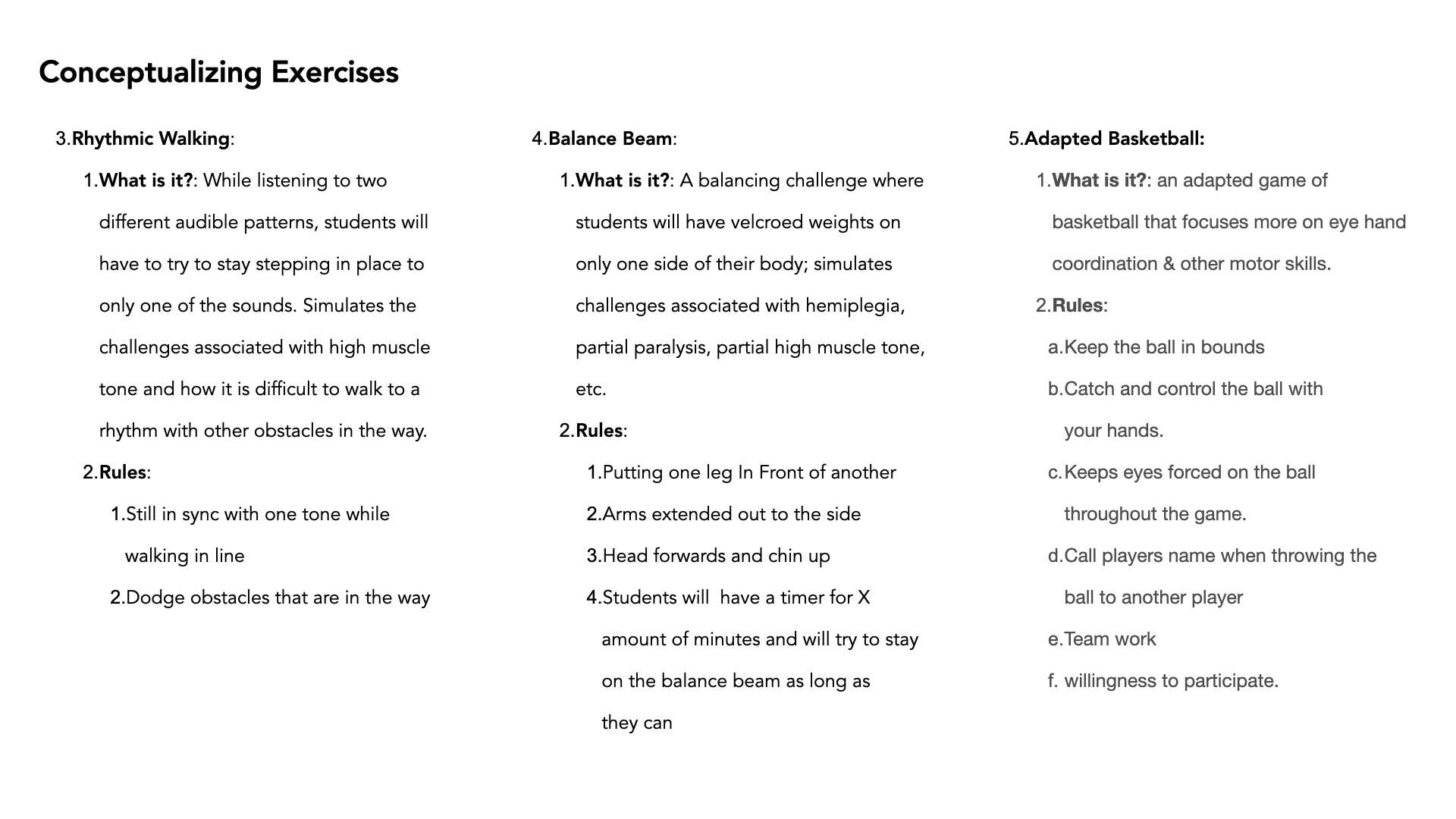
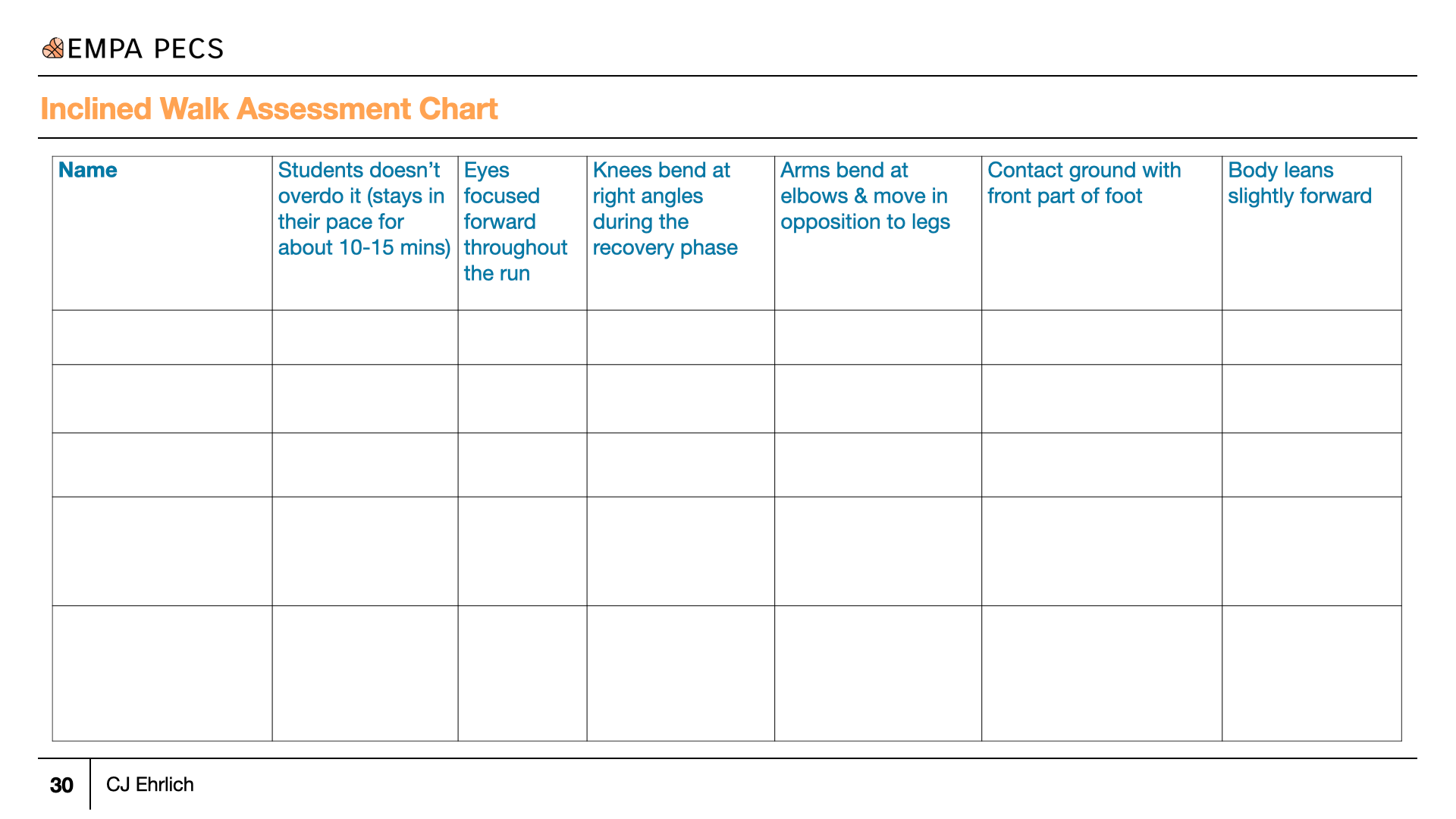
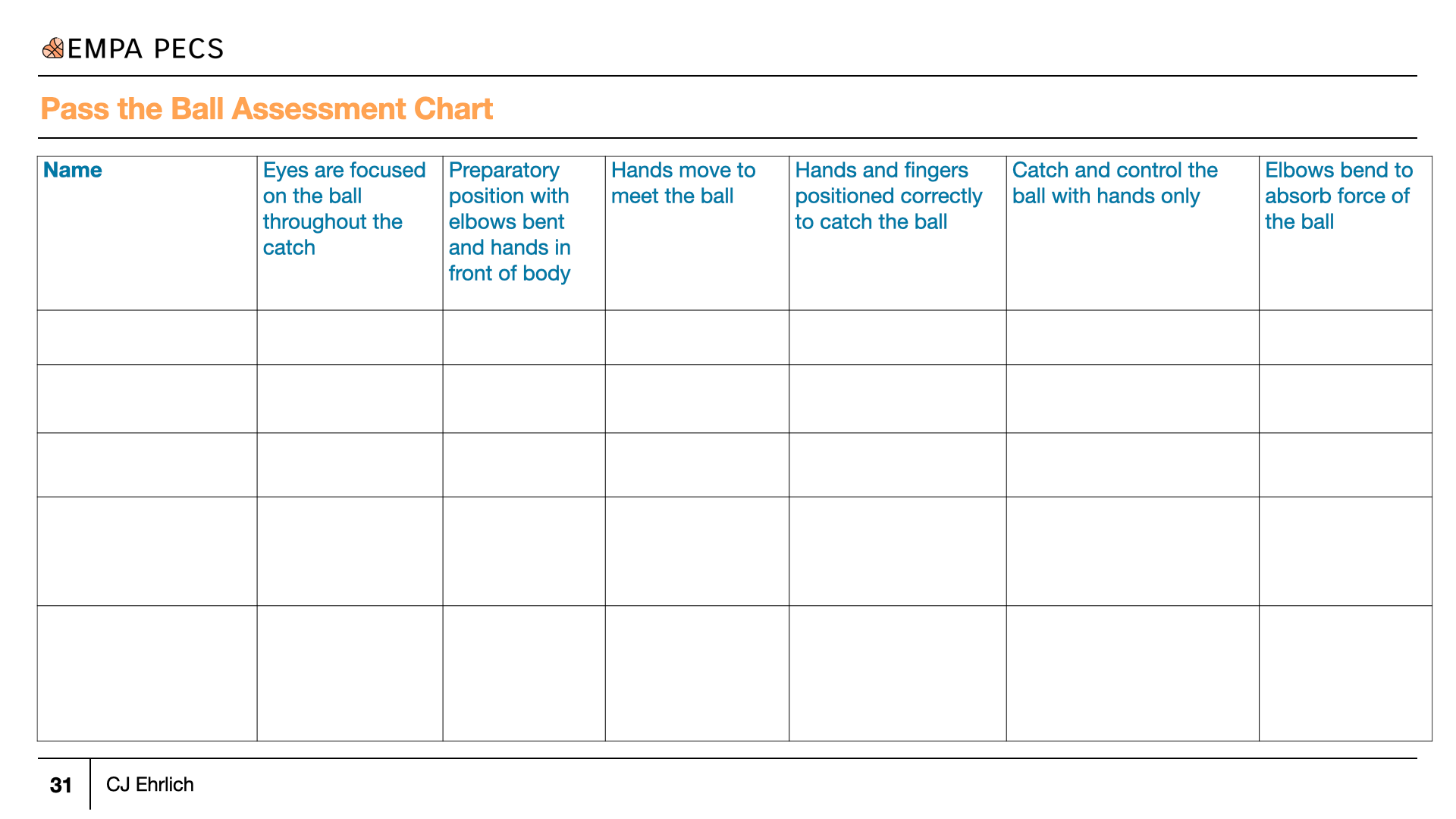
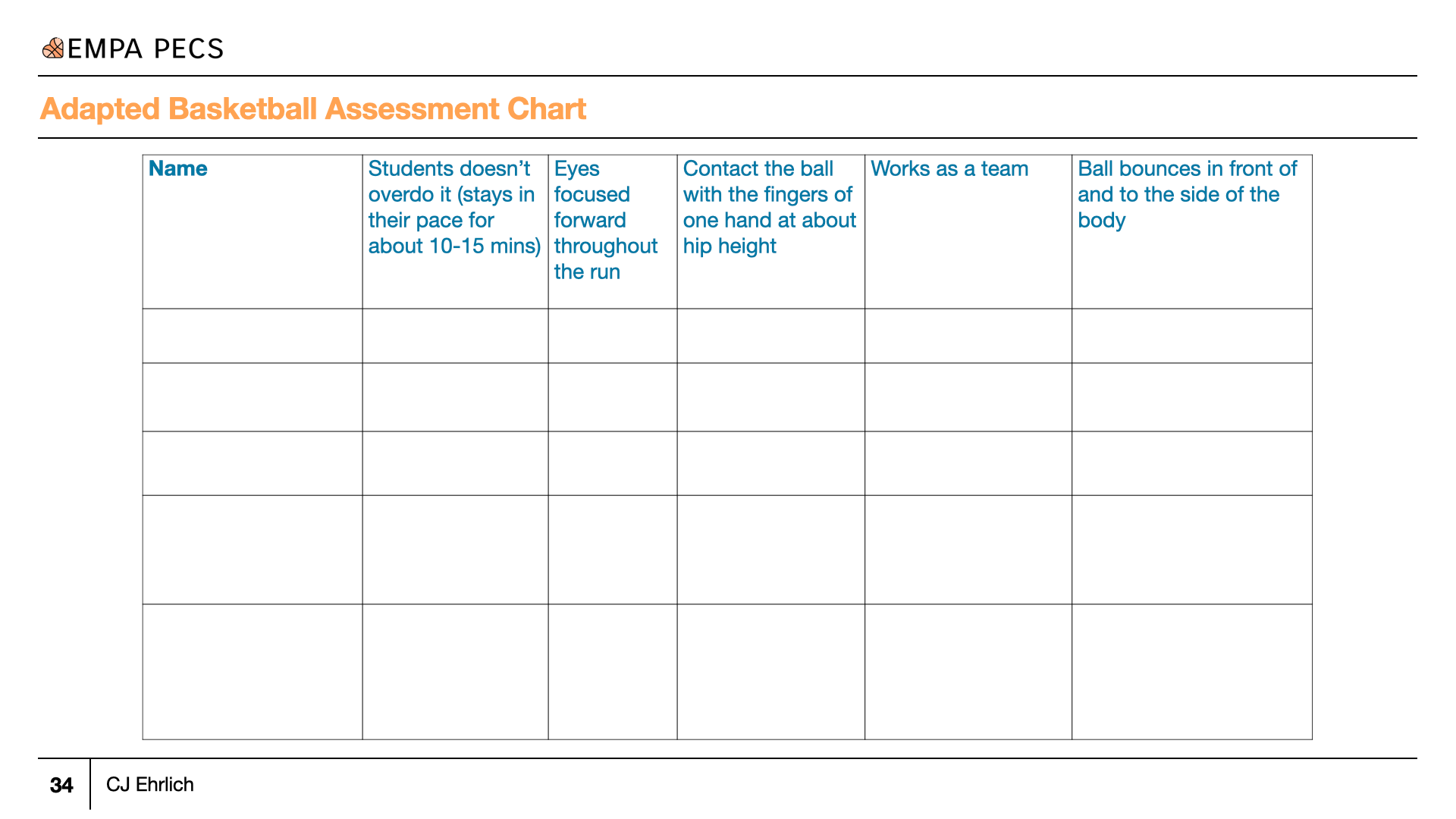
Web App Ideation and Prototype
Recap:
An empathy based pecs planning and assessment web app to educate neurotypical elementary school student about their neurodivergent peers.
Achieve empathy and community through education and physical activity in the elementary school setting.
Furthermore, we will look at how we can give the knowledge from ISF Trainers to Sayville elementary coaches who can then pass it to their neurotypical students.
6 Months into Future Research:
In 1-3 months: Refine the Ui of the web app and present it to a coach at Sayville Elementary. Design more research and empathy based exercises.
In 3-6 months: Provide a way for ISF coaches and Sayville PE teachers collaborate and communicate. Observe a neurotypical gym class using the app for their physical education class.
